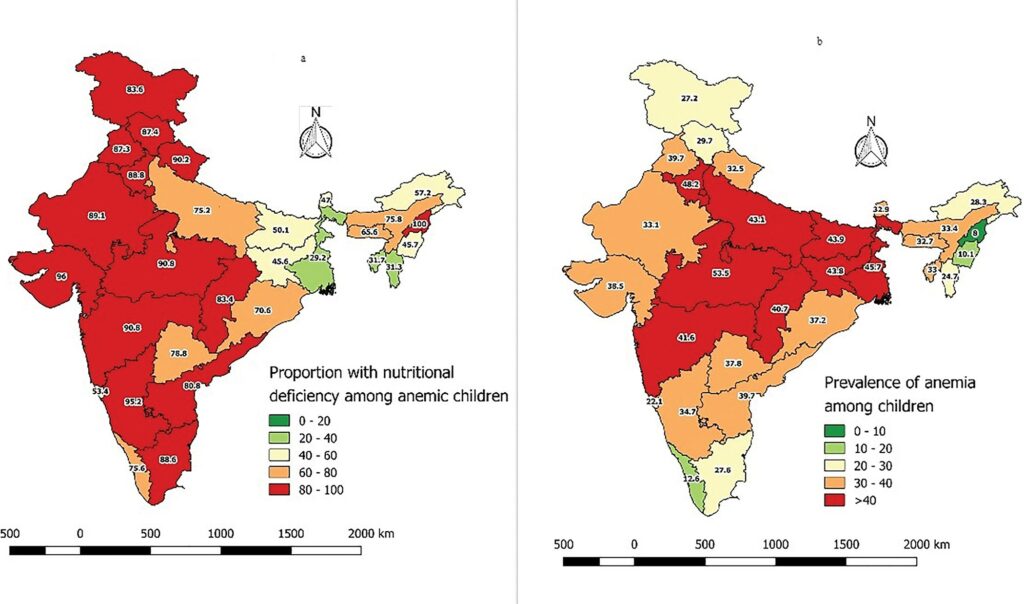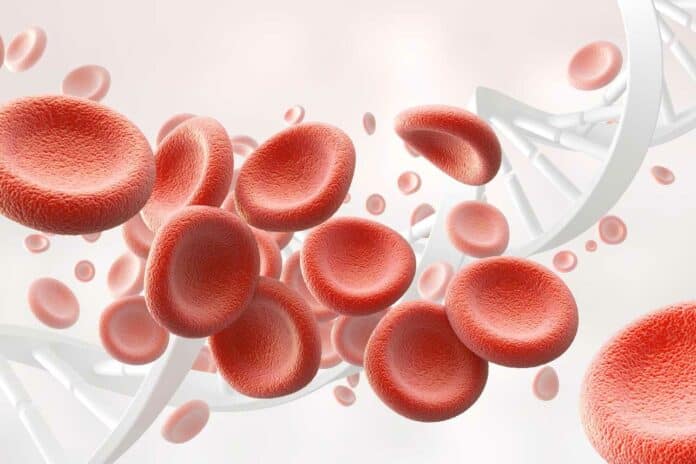Globally, anemia poses a significant public health concern, affecting around 1.62 billion people. In India, the Global Burden of Disease 2017 estimates that approximately 45% of the population suffers from anemia.
The National Family Health Survey 5 in India highlights a high burden of anemia among children under five years old, with an estimated prevalence of 67.1%. According to the WHO classification, this indicates a severe public health problem.
A recent study published in Plos Global Public Health aimed to determine the prevalence of anemia and anemia with micronutrient deficiencies among children aged 12–59 months in India. The study utilized data from the Comprehensive National Nutritional Survey (2016–2018), Asia’s largest nutrition survey covering children aged 0–19 years in India.
Scientists employed a generalized linear model (modified Poisson) with adjusted prevalence ratio (aPR) to assess socio-economic and biochemical factors associated with anemia and micronutrient deficiencies in children aged 12 to 59 months. This approach helps to identify determinants and potential interventions for addressing the prevalence of anemia in this age group.
In this study, trained phlebotomists collected blood samples from children aged 12 months to 59 months. Various blood parameters, including hemoglobin, serum ferritin, erythrocyte folate, and vitamin B12, were assessed from the blood samples.
The primary outcomes were anemia and micronutrient deficiencies, such as vitamin B12 or folate deficiency. The study also examined the association of serum vitamin A, zinc, and vitamin D as covariates with anemia and anemia with micronutrient deficiencies.

The research employed a conceptual framework based on existing literature, outlining fundamental or underlying determinants and immediate determinants of anemia. 31 covariates were identified from this framework to assess the determinants of anemia among children aged 12 to 59 months.
Quantitative variables like mothers’ age, education, and birth spacing were categorized according to guidelines and existing literature for regression analysis. Intake of iron and folic acid (IFA) supplements were classified into four groups: never consumed, occasionally consumed, sometimes consumed, and daily intake.
Out of 11,237 children aged 12–59 months, 40.5% (95% CI: 38.6–42.6) were found to have anemia. The prevalence of anemia was similar among boys and girls. Among the anemic children, 2,639 had anemia with micronutrient deficiencies. A higher proportion of micronutrient deficiencies was observed among anemic children than non-anemic children. Specifically, iron deficiency was more prevalent among children with anemia than those without anemia.
Scientists noted, “However, we did not observe much difference in the proportion of vitamin B12 deficiency and folate deficiency based on the presence of anemia.”
The study estimated that the proportion of anemia associated with iron deficiency might be around 25% among preschool children. The study also stated that iron deficiency might be as low as 14% in rural areas and 20% in high inflammation and infection countries.
Scientists noted, “Micronutrient deficiencies, antenatal IFA intake, and safe hygiene practices need to be strengthened to leave no stone unturned in control of anemia among under-five children in India.”
Journal Reference:
- Yadav K, Ramaswamy G, Puri S, Vohra K, Achary T, Jaiswal A, et al. (2024) Prevalence and determinants of anemia due to micronutrient deficiencies among children aged 12–59 months in India–Evidence from Comprehensive National Nutrition Survey, 2016–18. PLOS Glob Public Health 4(1): e0002095. DOI: 10.1371/journal.pgph.0002095
